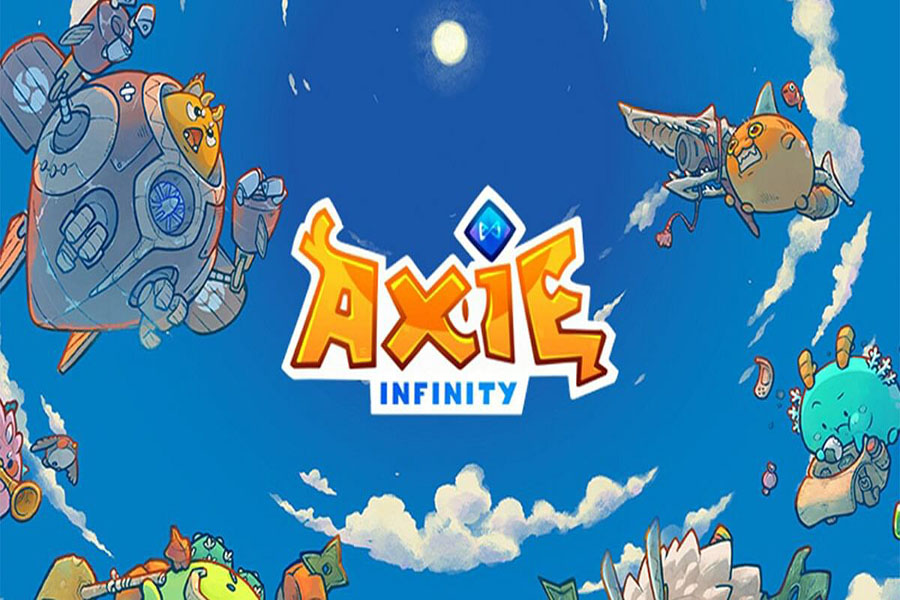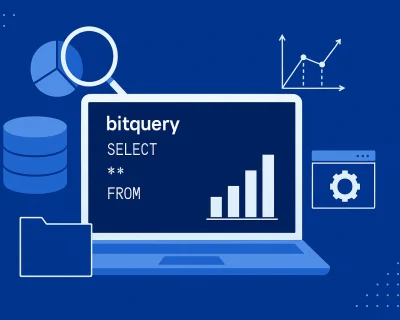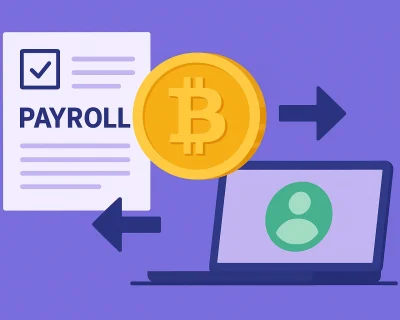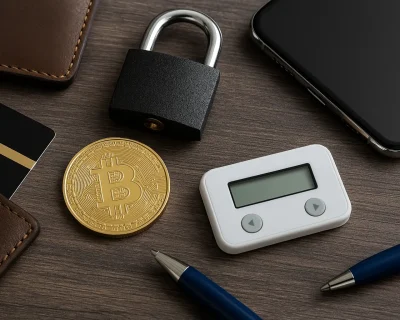Mobile Gaming and Crypto Should Become One
Mobile games are now just as popular as console and PC games. This is mainly thanks to the technological revolution of the mobile industry towards the mainstream. Crypto, incidentally, is also increasing its influence within the same space. With both sharing similar online and connectivity elements, it is just a matter of time before the two completely overlap each other.
But is it just about having tangible in-game assets? Or investment towards spending time on the game itself? Whichever direction both will go, the fact is that their intertwined future is a very real and practical possibility in the next few years.
Why Crypto and Mobile Gaming Go Together Well
Simply put, crypto and mobile gaming share the structure of a single open network with multiple users in real-time, with a virtual space representing economy and communication running throughout its internal workings. This alone is the biggest reason why crypto and mobile gaming can potentially become one.
Dividing this primary connection would be these following sub-factors:
1. Transaction Transparency
Online MMO games can provide access to multiple users of any transactions and purchases occurring within the medium. This is especially the case for mobile games with a dedicated economy auto-adjustment system that reacts to real-time supply and demand. Not only does this make it easier for players to gauge their virtual items, but it also allows them to prioritize activities based on the most optimal obtainable “advantages.”
Assets are also commonly shared, although it is inherently limited to each game only. We have yet to witness the implementation of true inter-title assets. But that is not to say it is impossible to do so in the next few years.
2. RMT Community
RMT, or real money trading, is basically the equivalent of cashing out your virtual assets in the realm of mobile games or just online games in general. Developers tend to be strict when it comes to RMT, often decreeing restrictions or bans on anyone doing it. This is understandable since most of the game’s profit only goes one way, and the parties involved in RMT typically don’t involve anyone within the management echelons.
Since crypto is itself considered an openly usable currency, it does not have this issue, as “RMT” can be done with it by just cashing the currency out directly. It is not in any way restricted or prohibited, with other cryptocurrencies even directly accessible.
3. Potential to integrate universal exchange systems
But even if inter-currency or asset exchange is limited in mobile games now, the promise of integrating universal exchange systems has always been seen as a possibility. For example, a newer game within the same franchise might be able to share some of its currency types, which can provide incentives for older players without completely alienating fresh ones trying out the latter game for the first time.
Of course, with the integration of crypto, this is very easily achieved. In fact, some of the asset accumulation rewards systems from the previous title may even be partially reimplemented. This accelerates value generation, pushing the players to keep up the same level of (hopefully enjoyable) currency grind on a newer title.
Challenges of Mobile Gaming in Crypto
Even as more mainstream gaming companies accept crypto transactions, the hurdles of combining mobile gaming and crypto as they are right now still remained. And that’s mainly, because of these challenges:
1. Interoperability
While cryptocurrency itself can be universal across different blockchain networks, the real interoperability of the game that uses that cryptocurrency will be limited to just the native currency used in-game. Otherwise, it would be a confusing web of different fluctuating values that could have abusable loopholes in between.
Another problem is the aforementioned two-game scenario. Specific restrictions should be established to provide an interchangeable value between different assets of two titles since we can assume that both use the same cryptocurrency in-game. If not regulated this way properly, once again loopholes might be abused, causing a runaway devaluation of the cryptocurrency across the board.
2. Potential Instability
Something even direr than managing values, potential instabilities with the cryptocurrency itself can cause entire virtual markets to crash and struggle to recover. The most infamous (for gaming in general, not just mobile gaming) is the Axie Infinity hacking incident, which incurred a net loss of more than $620 million in combined in-game assets and cryptocurrency. This caused hundreds of thousands of players to suddenly lose their hard-earned efforts, with some even completely sunk into debt through no fault of their own.
If not handled immediately and effectively, cryptocurrency instabilities eventually cascade into a mass exodus of the gaming community. After that, the game spirals down even further to its doomed closure. Without a robust level of guarantee that such scenarios won’t occur, a perfect integration of crypto and mobile gaming might still be a fanciful dream.
3. NFT Implementations
The long list of failed NFT implementations over the past two years has completely soured their reputation with the public. NFT, as a concept of a “tangible” virtual asset by itself, is not bad. But when driven by systems that are either internally controlled or driven by deception and scams, the trust in building game NFTs that can be universally transferrable becomes a hard-boiled challenge for even the most passionate developers.
Even then, an effective way of changing traditional MMO virtual assets into NFTs is still not set in stone. What happens if the item becomes a speculative asset, no longer functioning as it was originally designed? How to gauge the inherent worth of NFTs traded outside the game? How about lower-value items that cross the line of being tradeable but are still considered virtual “commodities”? Can these be openly kept as NFTs? Lots of questions still need to be considered.
4. Casual Gamers
What exactly would casual gamers gain by playing cryptocurrency-based mobile games? If they represent such a huge part of the global gaming community (63% in the U.S. alone), wouldn’t any mobile crypto game be heavily affected by their acceptance level?
Right now, the dominance of pay-to-earn (P2E) crypto games like Decentraland and Battle Infinity suggests a trend of cooperation and mutual community building, so at least the game cultivation question is already addressed. As for the issue of technical investment, the mobile crypto game should allow the accumulation of playtime and crypto assets while respecting the time and effort of the user.
On the other hand, one crypto mobile gaming segment that could see benefits when it comes to casual gamers is the iGaming industry. The majority of the legit online casino industry and their providers are looking for exactly those player profiles. Ones that would drop by once on a weekly basis just to relax and have some fun without having to get too invested in-game mechanics. Here’s where newly created Bitcoin casino brands, which there aren’t that many of compared to regular FIAT-only online casinos, can get a head start by building a proper mobile app with a blockchain base underneath it. Real-time and momentary exchange of information and funds would extensively improve players’ experience in something like live Bitcoin blackjack games.
Because, after all…
5. Should Be Fun, Not Work
Mobile crypto games are still, at their heart, interactive entertainment media. It should never feel like a chore to do daily quests simply because you need to keep up the crypto-earning pace. Because at that point, it is no longer considered a game but a full-time job masquerading as one. More importantly, it should be able to compete with the likes of dedicated video games in terms of complexity. High replayability results in high adoption.
When the game is fun enough to “waste” time on its own, the investments accumulate at their own pace. This helps build the game’s community better and rewards play for simply enjoying an activity that they already love to do by default. Everything then snowballs toward a stable economy and a healthy exchange of crypto assets.
Developments Integrating Crypto and Mobile Gaming
Crypto games, as a whole, have been on a rapidly accelerated growth over the last ten years. As of 2022, the blockchain gaming market has already grown to almost $5 billion. Of course, a big part of this can be attributed to crypto gambling.
But since the number of MMO crypto games over the last few years has exponentially increased as well (about 1,500 as of July 2022), we cannot simply dismiss this portion of the market’s growth.
This is the case, especially for the P2E market, where the dream of a fully profitable “legal RMT” system for every player is still a concept pursued by many enthusiasts.
True Mobile Crypto Gaming?
As for the actual penetration of cryptocurrency and blockchain technology in general to the mobile market, the implementation is still purely platform based. You get to play a version of an already existing P2E crypto game on a smartphone or tablet.
For example, Axie Infinity, MOBOX, and Splinterlands are all playable on a browser but are converted to versions that can be accessed on Android and iOS devices. Think of it as something like Genshin Impact (multi-platform) but uses cryptocurrency instead.

Normally, this is technically enough on its own for us to consider as a “mobile crypto game”. But since we are leaning more towards the portability side of the market, a direct competitor to the likes of the Nintendo Switch would perhaps be the better long-term goal. Thus, in theory, we would like to have more crypto games like STEPN (at least in availability), which is exclusively only available on mobile platforms.
Making Mobile Crypto Games Normal
Getting casual gamers into mobile crypto games is also another challenge because of the overall negative reputation that cryptocurrency has accumulated with the coverage of multiple hacks and scams, as well as the whole set of NFT debacles. But the fact of the matter is, so long as you are using well-backed cryptos such as Ethereum Classic or Bitcoin, such concerns should not be taken as hysterically.
One giant hurdle for mobile crypto games is that, while the “mobile” part should suggest an easygoing and relatively chill pace, many P2E crypto games are hardly played simply because they provide good entertainment. The incentive still goes heavily to the earnings, and the trudge to go along a game’s most likely skewed balancing exacerbates this frustration further among many players. Even now, as good as Axie Infinity’s concept seems to be, it is still largely considered a “grindy” crypto game, meant to be enjoyed only by those who truly love its collection system at heart.

Another basic issue is that the P2E model itself is still riddled with many flaws, the biggest of which, in recent years, are security and regulation. While most crypto games always present robust tokenomics models, they lack the innovative edge to attract newcomers as a game (not as a profitable medium), which is essential to achieve a strong and loyal player base.
Of course, many companies attempting to claim their stake in this increasingly saturated market understand this and have made their own attempts at standing out above the rest. My Neighbor Alice, for example, aims (theoretically, at least) to become more of a down-to-earth Stardew Valley type of game that just so happens to trade in NFTs and crypto.
Can We Expect “True” Mobile Crypto Gaming Now?
The year 2023 brings us another set of “mobile” crypto games available to be played on your smartphone or tablet. However, a good chunk of these seems to be yet again more on the tokenomics promotion side than being presented as an actual game. Some of the actually interesting ones, like the aforementioned My Neighbor Alice, aren’t available on mobile but are exclusive to browsers.
So, for the moment, the outlook of true mobile crypto games does not exactly look very good. But should cryptocurrency gain even more traction as standard legal tender for the common folk in the near future, the road to their integration with dedicated mobile games like Blue Archive or Call of Duty should come shortly after.













